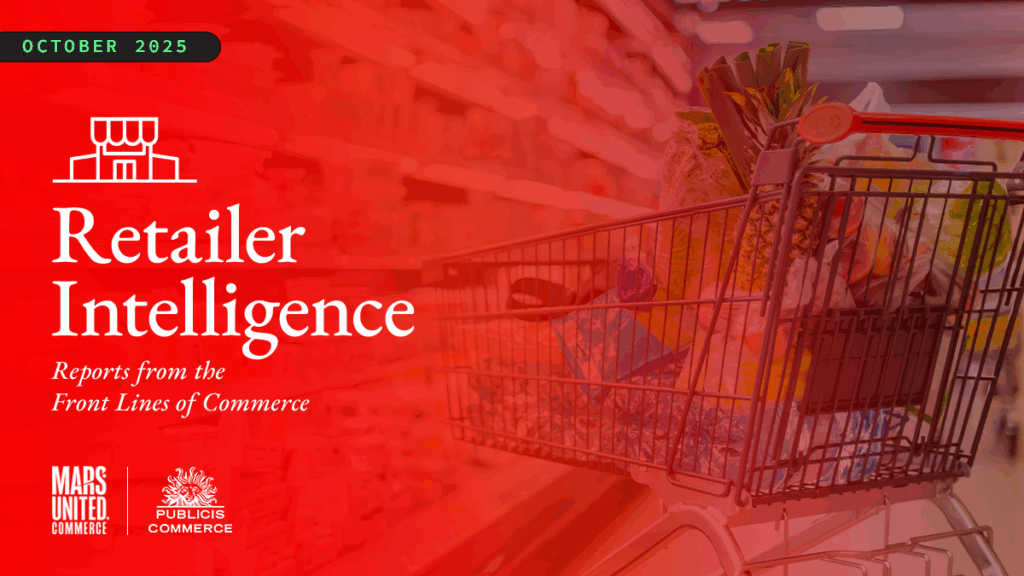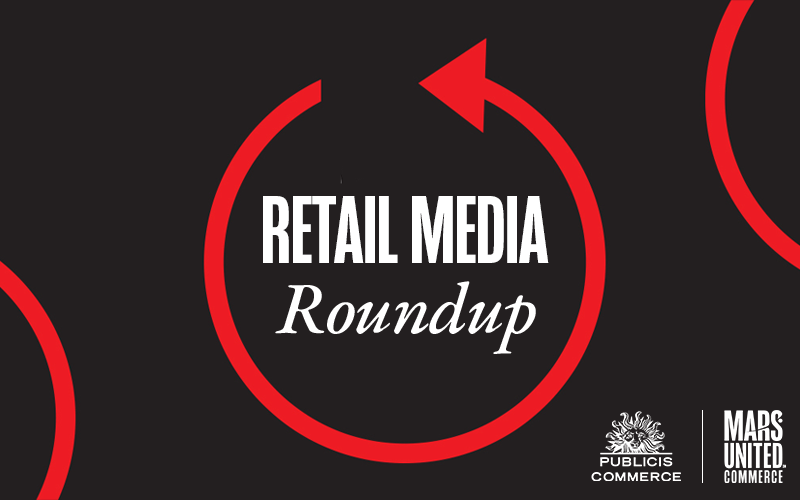By Ethan Goodman, Publicis Commerce
Amazon Ads’ annual unBoxed event always provides a thought-provoking glimpse into the industry’s future. Given Amazon’s status as the longstanding, undisputed leader in digital commerce, the new product announcements unveiled at unBoxed often signal the strategic direction that other ecommerce leaders will ultimately follow.
As both a Diamond Sponsor of this year’s event as well as an attendee, I had the unique opportunity to learn about Amazon’s new products and services first-hand, and then to immediately start discussing their potential impact on commerce with the many clients, partners, and other industry peers that we met with during the event. Here are the four key themes that emerged from both vantage points.
1. Full funnel advertising has formally arrived. A number of new tools and services presented at the event were directly related to helping brand partners better connect national and retail media within the Amazon ecosystem.

The most overt example of Amazon’s plan is the rollout of a new campaign type called “Full-Funnel” that combines search and display activity into one platform. The AI-powered platform automatically optimizes ad delivery across formats and placements on Amazon.com and elsewhere. The tool learns as it goes by assessing Amazon’s streaming, browsing, and buying signals to build campaigns that can deliver results from product discovery to purchase.
2. Automation abounds. There were several announcements around automated processes for creative, for both advertising copy and the content assets needed to build product detail pages. One that generated particular buzz is a tool that cost-effectively creates high-quality video ads using static images.
In a different context, Amazon also introduced a natural language query generator for Amazon Marketing Cloud (AMC), an incredibly helpful insights platform that historically has been difficult for anyone but data engineers (and their SQL coding skills) to use. The new tool will let anyone ask questions to extract the data they need, identify insights, and get recommendations.
Retail media buying is another area where automation is becoming more prevalent as brands seek to offset some of their substantial — and increasing — Amazon ad investments by reducing the labor costs involved with managing the activity. Brands have been working with their agencies to identify ways of using AI to handle some of the back-end work more cost-effectively. In addition to new tools from Amazon, we met with some third-party vendors that are releasing solutions of their own.
3. Those two themes coalesce in the next one: measurement, a common topic at nearly every commerce event as brands look for new and innovative approaches to evaluating the impact of their activity on Amazon (and everywhere else). I’m happy to report that the need to gain a greater understanding of total business impact rather than just measuring campaign performance — a core strategy at Profitero+ and Mars United — is being embraced by practitioners across the industry. (The “Full-Funnel” campaign type mentioned earlier is a strong step in this direction.)

There also was plenty of discussion about how brands can better leverage AMC to understand what’s happening across their entire Amazon business, particularly at the audience level. Publicis Commerce has a proprietary tool called Warehouse that’s designed to do exactly that by uniting advertising and Vendor Central data to deliver a more holistic view across the Amazon ecosystem. We also had the privilege of meeting directly with the AMC product team to learn about their roadmap for the future and how we can work more closely together to build business-driving solutions for our mutual clients.
4. The last — and least surprising — theme was, of course, agentic search and shopping. Consumers are beginning to shift their search behavior from traditional keywords on Google (not to mention Amazon.com when they’re shopping) toward the conversational queries accommodated by ChatGPT, Perplexity AI, and Amazon’s own Rufus agent.
Commerce marketers have developed the tools that help them understand what keywords are important for traditional search, and they know the levers that can be pulled to optimize their presence on the results page. The perception now is that we’ve started a whole new ballgame with conversational search. Clients are now asking what “prompts” are important for agentic search, how their brands are currently showing up in those results, and what they can do to optimize their presence — not only in Rufus, but in ChatGPT (which presumably is already directing traffic to Amazon). We’re piloting a solution to solve these needs as well.
And beyond agentic search is the looming figure of agentic shopping. How do brands prepare for a world where agents are handling the shopping mission — researching, choosing, and even buying products on behalf of consumers? The fundamentals are the same, but the solutions might be very different.
About the Author

Ethan Goodman leads the digital commerce practice of Publicis Commerce, a diverse role that puts him in charge of both Profitero+ and all relevant functions at Mars United. During his career, Goodman has conducted groundbreaking work in the areas of retail media, ecommerce, digital shopper marketing, and voice-enabled engagement. His talent for spotting the “next big thing” has made him a critical asset for the company across roles that put him directly in charge of innovation and strategic investments, and his work building ecommerce and retail media practices has made Mars United an industry leader in both areas.



